- Intermittent small scale mining between 1882 and 1962 produced an estimated 74,000 oz gold;
- Existing workings are mostly open and dry to approximately 275 m below surface on both the Orleans (1020’ level) and Great Western Veins (900’ level);
- Thirty-five historical samples collected post-mining across the Orleans Vein, from the 960’ to 1020’ levels, reportedly averaged 0.389 opt gold; and,
- Historical production records indicate recoveries between 92% to 98% for gold and 53% to 82% for silver, through cyanidation.
- Technical Report for the Gold Point Property
The Gold Point Project is located 26 miles south of Goldfield, Nevada, and covers several historical mine sites that intermittently produced gold and silver between 1882 and 1962. The first activity at Gold Point dates back to 1868, when prospectors discovered lime deposits, and subsequently silver, which was the primary commodity mined until approximately 1927 when deeper operations encountered more gold rich veins. Mining continued intermittently until 1942 when production was suspended by a government order related to the war effort. Operations resumed again in 1959 but were terminated when a cave occurred in 1962.
Since 1962, various operators have sought to reopen the mines and revitalize the district; however, there is no evidence that any systematic exploration has been conducted or significant mining done.
At least 15 significant veins have been historically reported in the district, while the majority of production within the bounds of the Gold Point Project was from the Orleans Vein and to a lesser extent the Great Western Vein.
The Orleans Vein was developed to the 1020’ level (approximately 275 m below surface), and produced an estimated 48,000 oz gold. Mining on the Orleans Vein ceased in 1962 when a cave occurred. Sampling done in 1982 from post-mining workings on the Orleans Vein reportedly includes:
- 35 samples from the 900’ to 1020’ levels averaging 0.389 opt gold and 1.44 opt silver;
- A sample from a 0.5 m wide vein on the 1000’ level returning 7.97 opt gold; and
- 21 samples from the 600’ to 1020’ levels averaging 0.314 opt gold an 1.42 opt silver, including a chip sample across 1.22 m grading 2.15 opt gold and 1.78 opt silver.
- The Western Vein was developed to the 900’ level (approximately 275 m below surface) and produced an estimated 27,000 oz up to 1922.
GGL optioned the core of the current property in 2019 from Silver Range Resources and Nevada Rand LLC.

GGL’s Work Programs
- Underground sampling at the Great Western Mine
- Surface prospecting and sampling
- Airborne magnetics and radiometrics
- Reverse circulation along the Great Western totaling 2,874 m (9,429’) in 15 holes
- Ground magnetics and HLEM geophysics
- Soil sampling
- LiDAR survey

Consolidation
- After a preliminary examination, GGL recognized larger, camp-scale potential and committed to consolidating the district.
- The current land package totals 4,917 acres, including 257 lode claims and 7 patented claims.
- GGL’s property now covers four significant former mines (Orleans, Great Western, Hornsilver, Grand Central) plus numerous small workings.
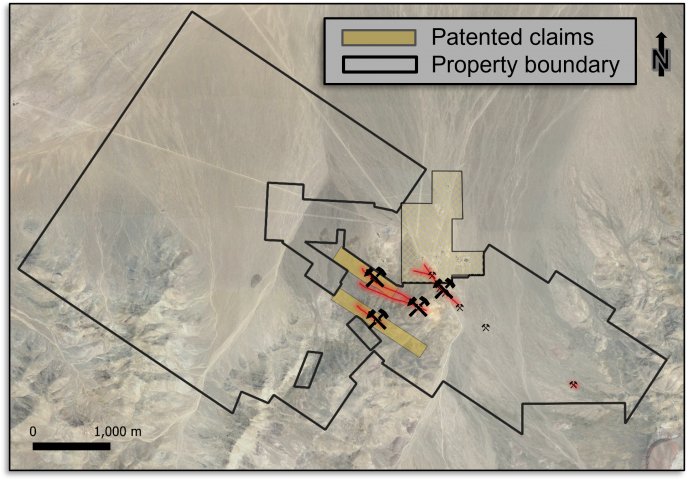
Geology
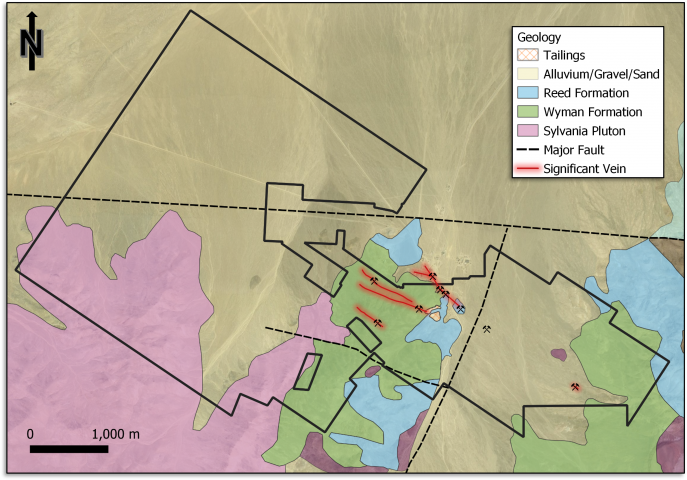
Mineralization
Three known deposit types being explored for:
- Past-producing gold-silver veins
- Copper-molybdenum porphyry,
- Porphyry target has been outlined by geochemistry but never drilled.
- Lithium clay
- GGL has an NSR Royalty on any lithium production from the Nevada Lithium Project and retains 100% of the mineral rights in the underlying bedrock.

Past-producing veins occur as north dipping, N60°-75°W, fault zones cutting Wyman Formation.
- The veins are strongly oxidized to the bottom of the workings.
- They comprise crushed quartz, re-cemented by hematite or chalcedonic quartz.
- Gold occurs in its native form, and silver as chlorargyrite.
- Minor galena, cerussite, bromyrite, chalcopyrite, and pyrite.
- Clay gouge separates the veins from the host rocks.
High-grade mineralization occurs in shoots:
- Shoots rake gently to the east, across the dip of the vein.
- Range from 2 to 40’ wide.
- The longest reported shoot extends for 320’ on the 600’ level of the Orleans.
Orleans Mine (looking northeast)
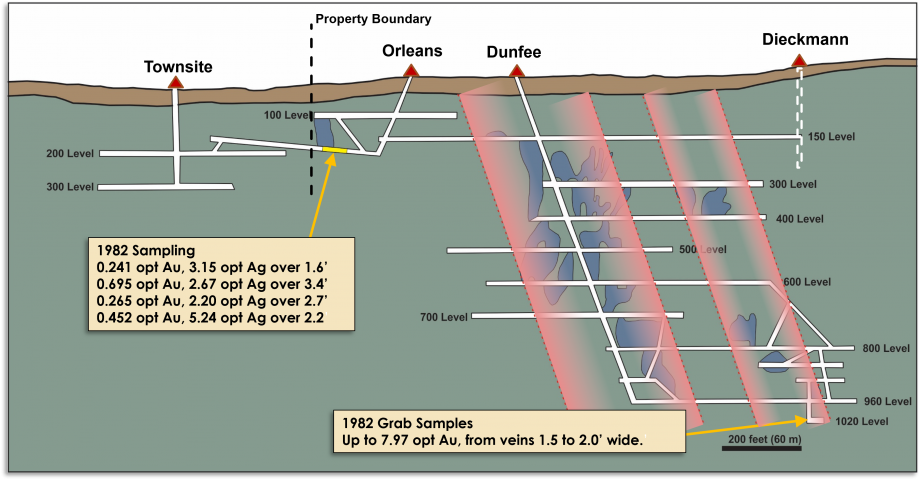
A second, older vein set strikes N20E and is steeply dipping
- Primarily silver and base metal bearing
- Contain galena, tetrahedrite, and pyrite
- Gangue is typically bull-quartz
Found in both Wyman Formation and the Sylvania Pluton.
No indication of post-mineralization movement along these veins.
Some of these veins are cut by the N60°-75°W faults.

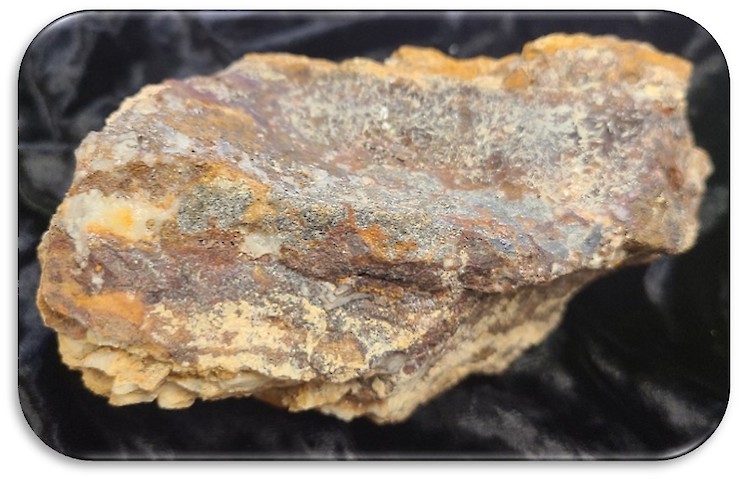
Past Producing Veins
Orleans
- Traced underground for over 650m
- Development to 1020’ Level
- Approximately 4,300m of development
Great Western
- Traced for over 800m (surface and underground)
- Shaft to 900’ Level
- Development to 600’ Level
- Approximately 975m of development
Hornsilver (Lime Point)
- Traced for over 820m
- Development to 610’ Level
Grand Central
- Surface trace exposed for 420m
- Development to 140’ Level
- Approximately 150m of development
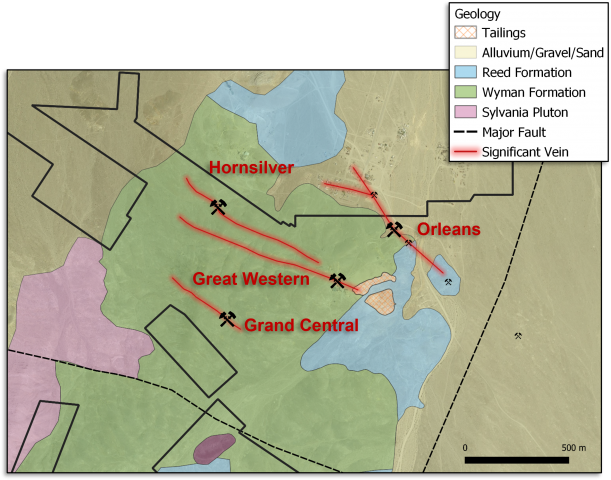
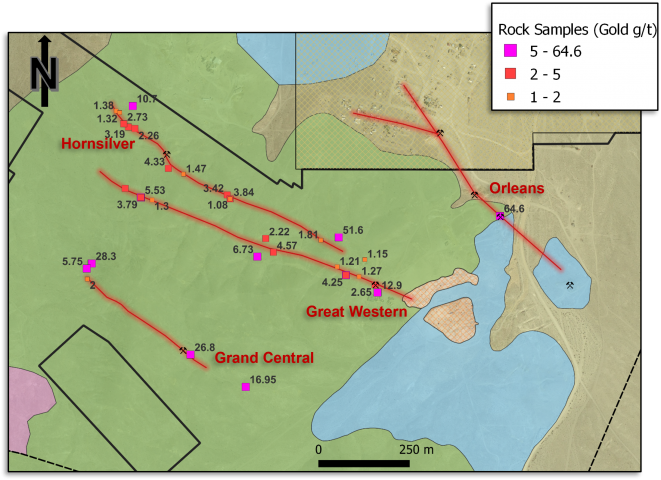
Great Western Mine Long Section (Looking South)
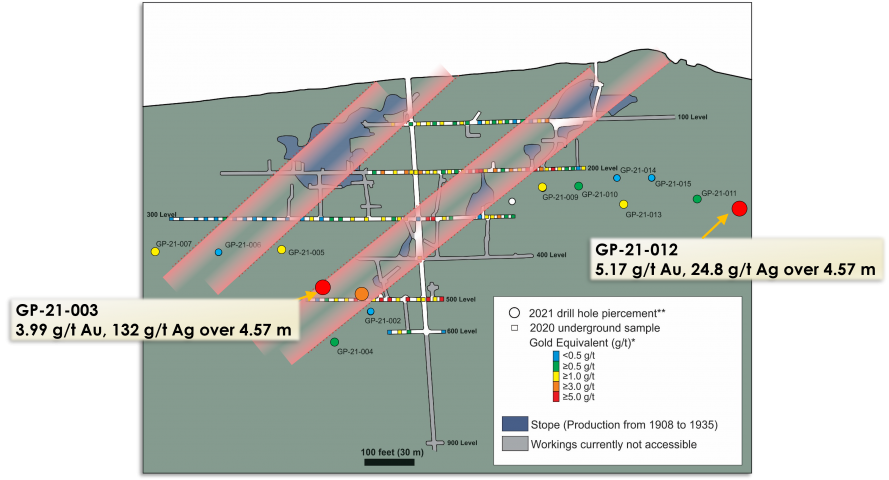
2021 Drilling - Select Highlights
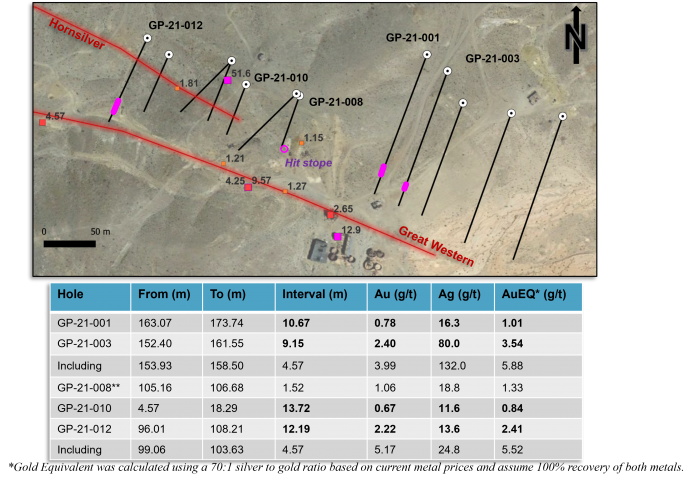
Drill intersections - Gold
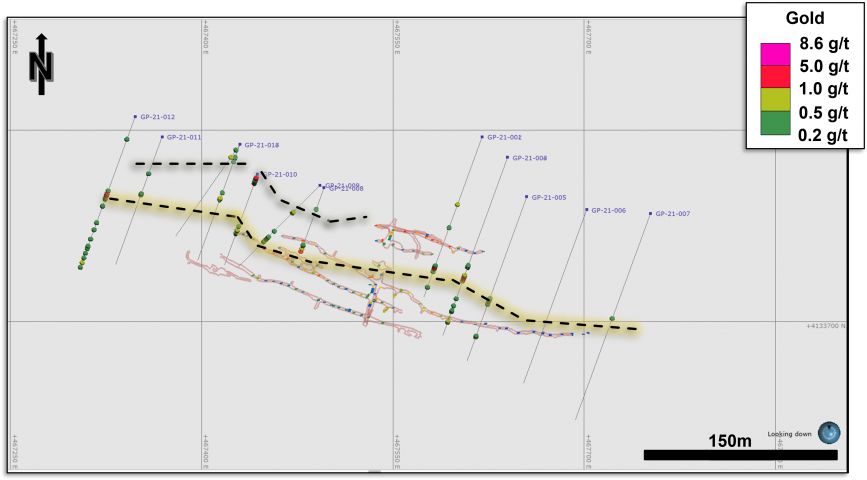
Drill intersections - Lead
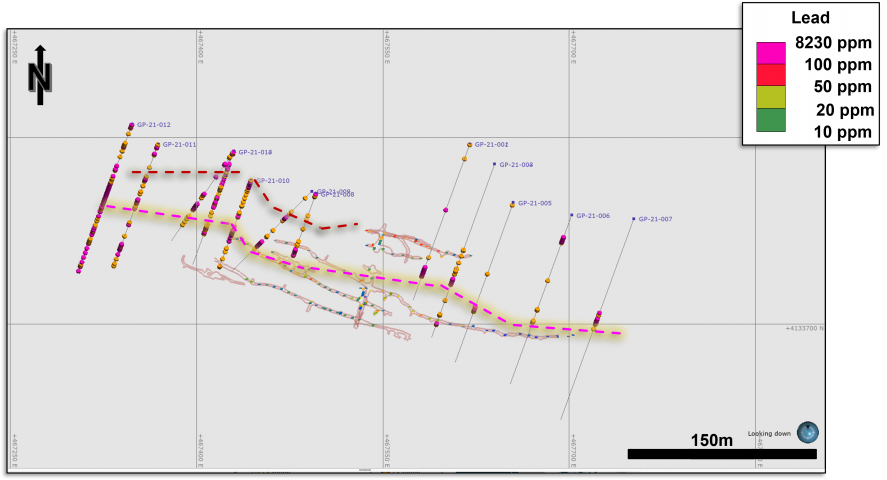
Generalized Cross Section

Other Veins and Targets
- 4 past-producing veins
- 13 known secondary veins
- Northwest trending
- High-grade gold
- Breciated
- North-northeast trending
- Predominantly silver-lead
- Lower-grade gold
- Unbrecciated bull-quartz
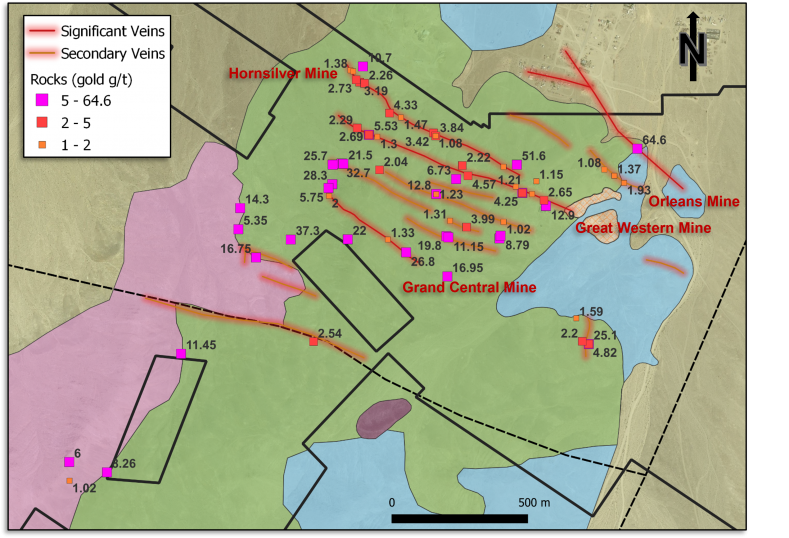
Eastern Potential
- The eastern strike extension is covered by alluvium for approximately 2 km.
- Several showings and soil geochemical trends show that the veins continue to the east.
- The Dieckmann Fault marks the western edge of the alluvial cover and possibly offsets the veins.
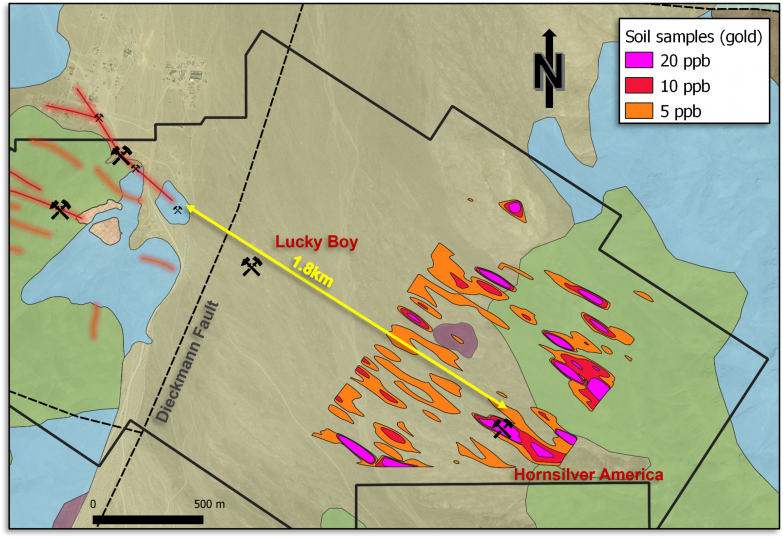
Western Porphyry Potential
- Complex, multi-phase Jurassic intrusion
- Distinct magnetic anomaly
- Strong molybdenum and elevated copper geochemistry
- Geothite, jarosite and kaolinite alteration
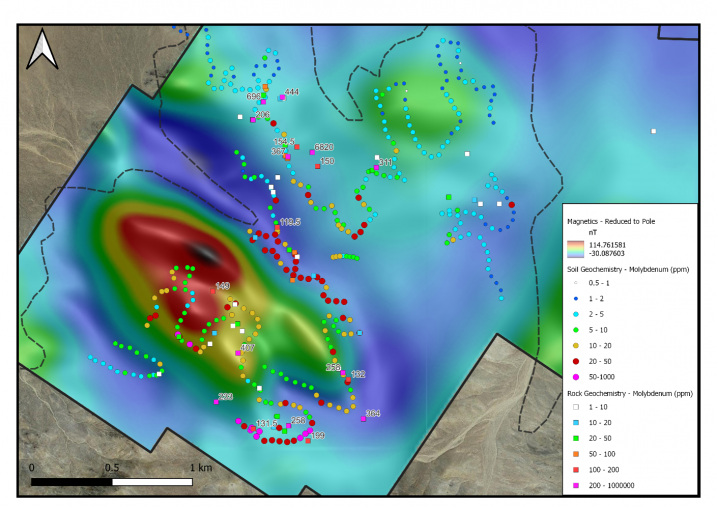

Next Steps
- Phase 1
- Detailed mapping and petrographic studies
- Additional soil sampling
- Ground based Induced Polarization (IP) survey
- Phase 2
- Deep drilling: underground workings have shown that surface weathering extends to at least 275 m depth.
- In this type of environment, surface weathering and leaching of mobile metals, such as copper, often results in highly-enriched supergene zones near the water table.

